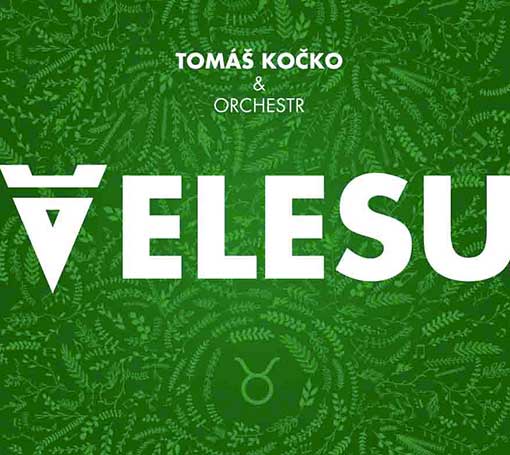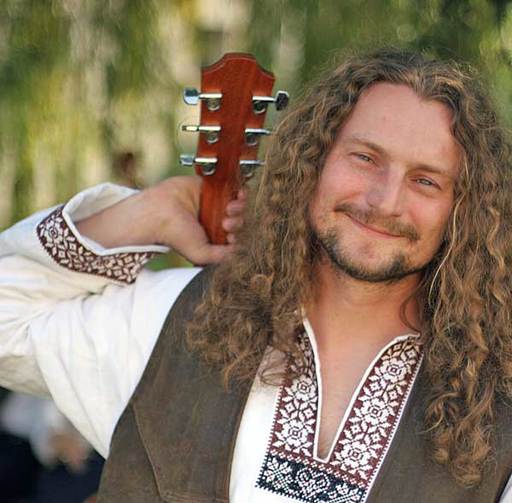The current album of Tomáš Kočko brings an image of the pre-Christian Moravia, violence and fear of impending changes. The individual songs combine death and the Slavic god of the underworld Veles into a thematic whole.
The pre-Christian religion of the ancient Slavs cannot rely on such amounts of written records as the religious systems of ancient Greece and Rome. Our legends about ancient Slavic gods and idols are not elaborated in such detail to result in a song that would correspond to the then hit of Zuzana Michnová Marsyas and Apollón. We know the Slavic pantheon from the few writings mainly from Eastern Europe, and for example we assume much more about Western Slavic paganism than we know. For example, Jarovit and Chors, who lent their names to two songs on the new album of Tomáš Kočko, are one and the same mythical persons according to some theorists. Others see Chors not as a god but the goddess of the moon.
And Veles, whose name Kočko used to name his ninth album? It was a horned god of horned and other livestock, the main antagonist of the heavenly God, sometimes depicted as a snake, the god of the afterlife, but also a partner of the goddess of life Živa, the god of singers and ultimately an archetype of the Christian St. George, the one, on whose name day snakes and scorpions emerge from holes. Kočko, who has been focusing on individual, sometimes very old layers mainly of the Moravian history in the long term, touched on Veles several times already on the album Godula (2011), which thematically followed the record Hodovnice (2001). Unlike both the above "Beskydy" records, which also offered songs from younger historical circuits (Ondrášova píseň on the album Godule), the Velesu album focuses on a single topic in the best conceptual sense.
 Velesu is a tight album framed in two ways. Its basic theme is death, embodied not only in the song Mohyly exactly in the middle of the album, but especially in the opening hymnal song Do Návu and a looser – but no less energetic – finish with Na konci dní (Do Návu II.). The second frame of the album is the above Veles, a mythical character that we can tie to the theme of the afterlife or the underworld, but that rather symbolise the vanishing orders as such on the surface of the whole album. The album, named after one of the mysterious pagan gods, is therefore not a superficial defense of paganism, which the author confirmed in a recent interview for the Rock & All Magazine: "It is true that the topic was taken on by a number of metal bands or esoteric composers long before me but I believe that both parties presented it rather single-mindedly."
Velesu is a tight album framed in two ways. Its basic theme is death, embodied not only in the song Mohyly exactly in the middle of the album, but especially in the opening hymnal song Do Návu and a looser – but no less energetic – finish with Na konci dní (Do Návu II.). The second frame of the album is the above Veles, a mythical character that we can tie to the theme of the afterlife or the underworld, but that rather symbolise the vanishing orders as such on the surface of the whole album. The album, named after one of the mysterious pagan gods, is therefore not a superficial defense of paganism, which the author confirmed in a recent interview for the Rock & All Magazine: "It is true that the topic was taken on by a number of metal bands or esoteric composers long before me but I believe that both parties presented it rather single-mindedly."
The key to Kočko's bilateral or multilateral view of the pre-Christian prehistory of Moravia is the title song Velesu, perceived, however, in the context of other songs on the album. Velesu is a song about uncertainty and the fear of a new order which was brought to Central Europe with Christianity. Not the peaceful mission of Cyril and Methodius but its ancestors from Germany, who came, in Kočko's interpretation, with swords and the war cry Gott mit uns. More than an archetype of the centuries-long battles of the "Czechs" and "Germans" and even more than a protest song against the "the affixed and new order", the song is a psychological probe into the thinking of people whose world is collapsing and who have not seen beyond the horizon of coming changes. The song, in which the author addresses the defeated god and the anonymous ancestor, who is losing certainty, should be viewed in the context of others. The situation is not such that the intruders from the south have swords and burn and plunder, while the original layer of the population is characterised only by tenderness, a burning heart and ancient songs with "extremely long tones". Even the ancient Slavonic warrior sings "weird songs". He also holds a sword and counts on the ax falling on his head in the battle (see song Do Návu).
Not only the two opening songs, but the entire new album by Kočko calls for different reading and interpretation. However, that is not its only asset. The former folk songwriters, who likes to keep coming back to the Wallachian poetry by Ladislav Nezdařil set to music, managed to make the biggest progress on the new album in the successful synthesis of various musical elements. The review of Pavel Zelinka published a few days ago ends with the following words: "A clear candidate for the local world music album of the year" and I agree. Rich yet readable arrangements, great sound (allegedly, there were several masters of the album from which the best one was selected), work dynamics plus the combination of singing and chanting, musical jokes and references to Tomáš's older records (do I correctly hear the motif of Ondrášova píseň in the song Vnuk?), that all already makes Velesu a candidate for an Anděl at least within the genre, if not the album of the year across genres.
Despite the difficult and somewhat controversial topic, the title song Velesu is one of the most harmonic songs I have heard lately. Then, add the details like the beautiful sound of percussion in Jarovít, the viola in Na konci dní or electric guitar in the last two songs (unlike on the record Godula, Kočko plays it alone this time). And also the fact that although the main theme of the record is death and the "Shepherd on his knees", the album as a whole does not sound sad or tragic. Jarovít, dancing to the jungle rhythm, is a song of hope, and that hope shines through other songs on the album. After all, the green colour on the album cover is the colour of hope.
CD Tomáš Kočko & Orchestr – Velesu, label: Indies Scope, 2016. 9 tracks, overall time: 39:18































